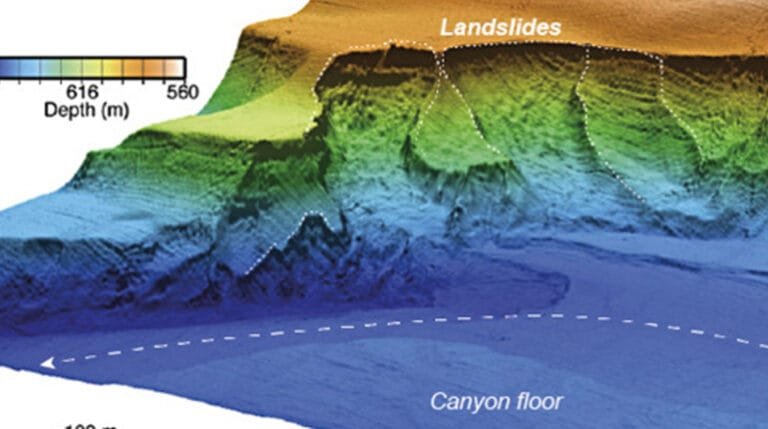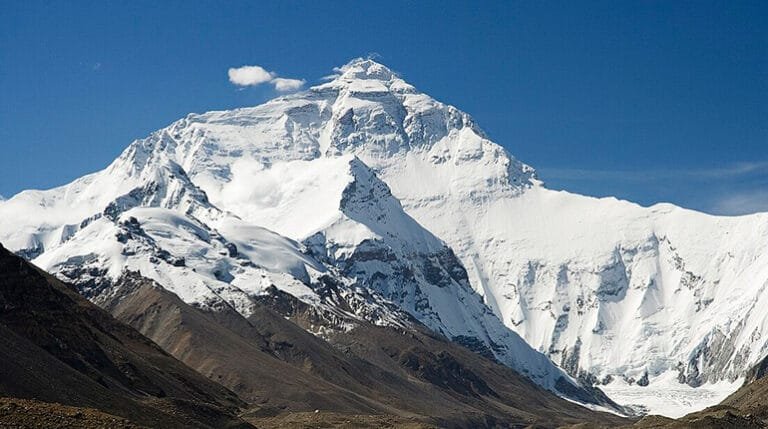Sediment Layers: Clues to a Worldwide Flood

Introduction
The story of Noah’s Flood, as described in the Book of Genesis, serves as a pivotal narrative in the Christian faith. While this account is often criticized and regarded as myth by those who embrace evolutionary theory and an old Earth viewpoint, numerous scientific, geological, and sedimentological observations can be interpreted in ways that align with a literal interpretation of the biblical narrative. In this article, we will explore sediment layers and how they can serve as clues to support the notion of a worldwide flood, as described in the Bible, through a young Earth creationist perspective.
The Biblical Account of Noah’s Flood
According to the Bible, particularly in Genesis chapters 6-9, God became displeased with humanity’s wickedness and decided to cleanse the Earth with a great flood. Noah, a righteous man, was instructed to build an ark to save himself, his family, and representatives of all living creatures. The floodwaters covered the Earth for 40 days and 40 nights, resulting in a global deluge that exterminated all life outside the ark. After the flood, Noah and his family repopulated the Earth.
The Concept of Sediment Layers
Sediment layers, or strata, are accumulations of sediments that have hardened into rock over time. They are commonly found in geological formations around the world and are often used by geologists to study Earth’s history. In the prevailing old Earth paradigm, sediment layers are interpreted as being deposited slowly, over millions of years. However, from a young Earth creationist perspective, these layers can also provide evidence of rapid and catastrophic geological processes consistent with a worldwide flood.
Types of Sediments and How They Form
Understanding the types of sediments and how they accumulate is crucial in examining their implications for a global flood model. Sediments can generally be categorized into the following types:
- Clastic Sediments: These are formed from fragments of pre-existing rocks. They can range in size from microscopic clay particles to large boulders, indicating high-energy environments.
- Chemical Sediments: These result from the precipitation of minerals from water. Their formation often involves processes like evaporation, which can rapidly deposit large quantities of sediment under certain conditions.
- Biogenic Sediments: These are formed from the accumulation of organic materials such as shells, coral, and plant materials. Their presence can indicate once-living ecosystems that have been buried and preserved.
Evidence from Sediment Layers Supporting a Worldwide Flood
1. Uniformity and Continuity of Strata
One of the most striking features of sedimentary rock layers is their uniformity and vast geographical continuity. When examining sediment layers across different continents, we often find remarkably similar sequences of fossils and sediments, regardless of local differences. This suggests a common environmental event rather than isolated occurrences spread across millions of years. In a young Earth framework, the widespread distribution of sedimentary layers can indicate a global catastrophic event, supporting the biblical account of Noah’s Flood.
2. Polystrate Fossils
Polystrate fossils are fossils of trees or other organisms that extend through multiple layers of sedimentary rock. Their existence challenges the long-timeframes typically proposed by uniformitarian geology. Instead of requiring millions of years for fossilization, polystrate fossils suggest rapid burial events consistent with the catastrophic sedimentation that would accompany a global flood.
3. Rapid Layering and Lithification
Geological evidence suggests that many sedimentary layers are formed much more rapidly than old Earth models would allow. Under conditions resembling flood processes, such as increased water flow and turbulence, sediments can be deposited in days or even hours rather than over millions of years. The theorization that these layers represent slow, gradual processes does not hold up when comparing sediment deposit rates observed today with those found in geological records.
4. Graded Bedding
Graded bedding is a sedimentary structure where particles are sorted by size, typically occurring in a single layer. This phenomenon can occur during underwater landslides or flows, where currents quickly transport sediments. The presence of graded beds in sedimentary rocks fits well within the context of a global flood, where high-energy flows would rapidly deposit sediment, neatly sorting particles by size.
5. Fossil Graveyards
Many regions around the world contain fossil graveyards, where numerous organisms are found buried together in a state of preservation. The high concentration of fossils from various ecosystems within these sites suggests sudden, catastrophic burial rather than slow fossilization processes. The sudden burial could result from the rapid upheaval of environments during a flood, aligning with the biblical account of mass extinctions occurring as waters rose.
The Global Distribution of Sedimentary Deposits
Geologists today recognize significant sedimentary deposits located on every continent, including thick formations in places like the Great Plains, the Himalayas, and the ocean floors. The widespread nature of these deposits and their characteristic features highlight a potential mechanism for sediment accumulation aligned with the flood model. For instance:
- The Chalk Cliffs of Dover: These formations, composed of microscopic sea creatures, illustrate extensive sedimentary processes indicative of a marine environment disrupted by significant cataclysmic events.
- The Grand Canyon: Often cited as a textbook example of erosion over millions of years, the canyon’s sediment layers also tell a story of rapid water action carving through massive sediment deposits.
- The Appalachian Mountains: Containing diverse rock layers formed from ancient marine environments, these mountains exhibit signs consistent with rapid sedimentation during changing geological conditions.
Isotopic and Geochemical Analysis
Modern technology allows scientists to analyze the isotopic and geochemical composition of sediment layers. Young Earth proponents argue that these analyses can further substantiate the flood model:
- Carbon Isotopes: Variations in carbon isotopes found in organic materials can suggest rapid deposition associated with mass destruction of life, as seen during a global flood scenario.
- Oxygen Isotopes: The ratios of oxygen isotopes found in marine sediments can indicate significant changes in global temperatures and sea levels, often consistent with the abrupt environmental changes that would accompany a cataclysmic flood.
- Chemical Signatures: Certain chemicals, such as zircon, found in geological formations might indicate rapid burial conditions typically not associated with long, gradual processes.
Conclusion
In considering the evidence from sediment layers around the globe, we find numerous clues that support a worldview consistent with the account of Noah’s Flood as recounted in the Bible. The uniformity of sediment layers, the existence of polystrate fossils, and graded bedding all provide a cohesive narrative compatible with a global catastrophic event. While the prevailing old Earth model often interprets these sedimentary records through the lens of slow geological processes, the young Earth perspective offers a plausible alternative—one in harmony with a literal interpretation of Scripture.
By examining geological data through the lens of the biblical creation account, we understand that the Earth can be perceived as a testament to God’s power and judgment, as asserted in the story of Noah’s Flood. The study of sediment layers acts not only as an exploration of Earth’s past but also as an invitation to acknowledge the congruence between science and faith, providing an enduring basis for belief in the historical truth of the biblical narrative.





